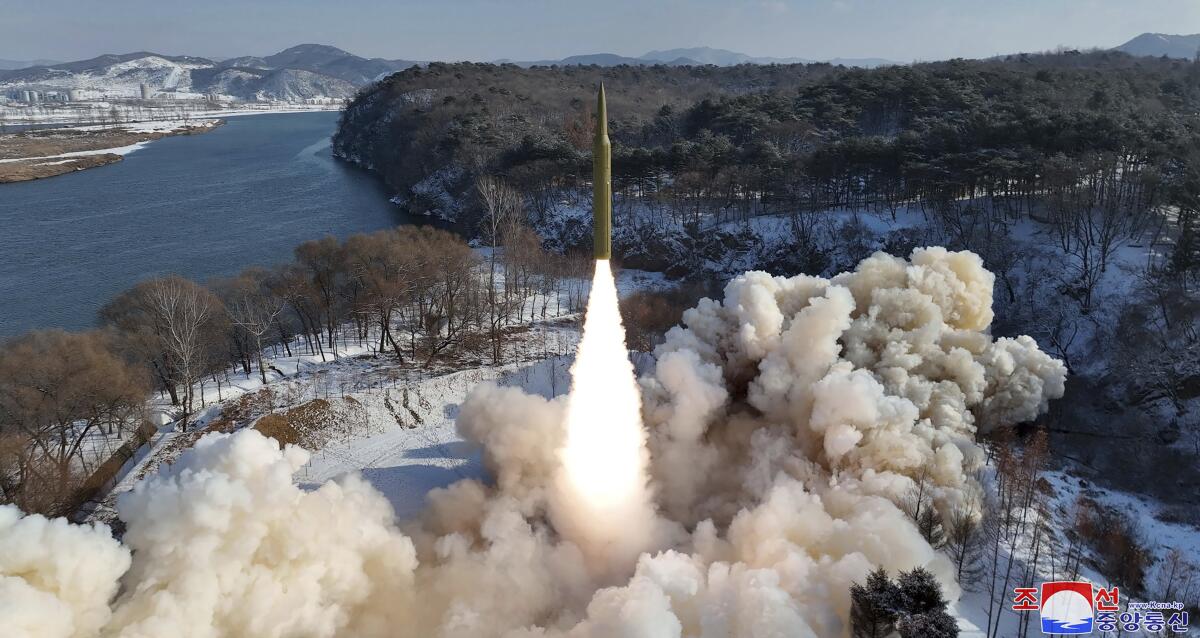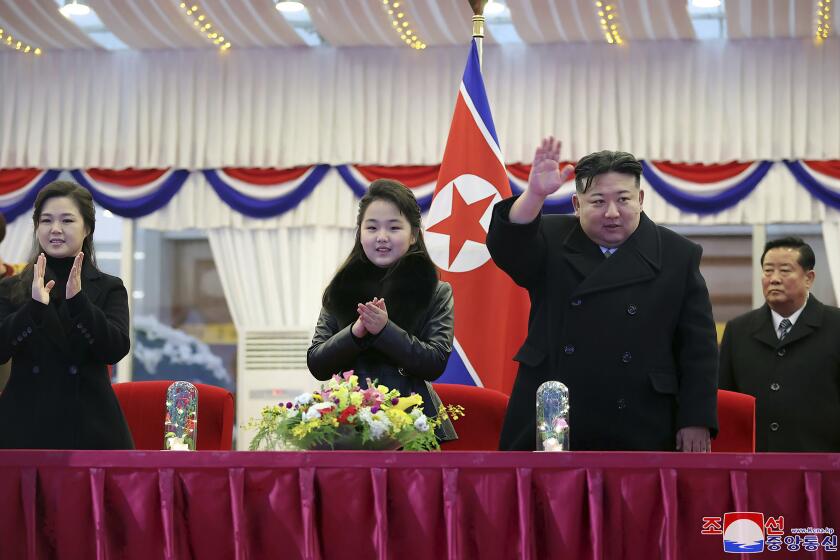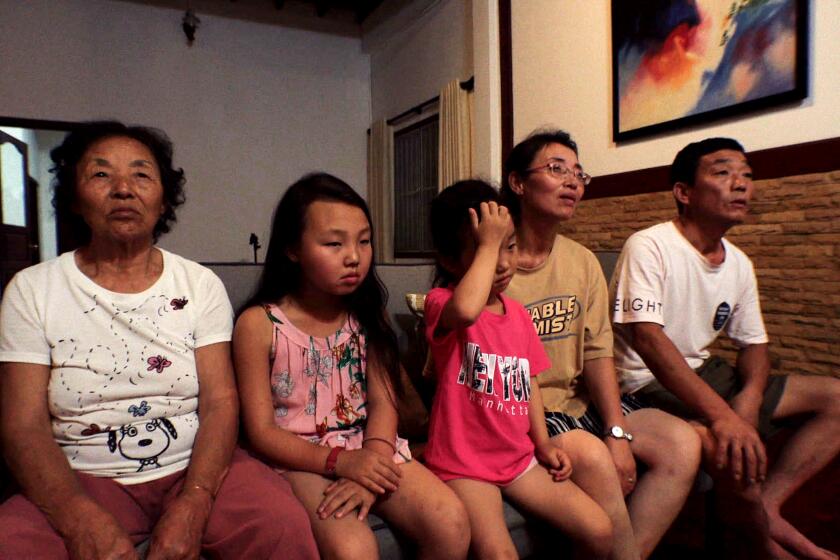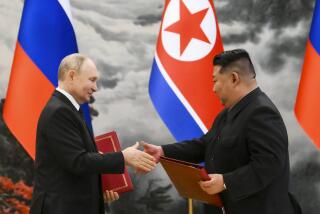North Korea says it tested a solid-fuel missile tipped with a hypersonic weapon

SEOUL — North Korea said Monday that it flight-tested a new solid-fuel intermediate-range missile tipped with a hypersonic warhead as it pursues more powerful, harder-to-detect weapons designed to strike U.S. targets in the region.
The report by North Korean state media came a day after the South Korean and Japanese militaries detected the launch from a site near the North Korean capital of Pyongyang, in what was the North’s first ballistic test of 2024.
The launch came two months after North Korea said it successfully tested engines for a new solid-fuel intermediate-range ballistic missile, which reflected a push to advance its lineup of weapons targeting U.S. military bases in Guam and Japan.
The North’s official Korean Central News Agency said Sunday’s launch was aimed at verifying the reliability of the missile’s solid-fuel engines and the maneuverable flight capabilities of the hypersonic warhead, which the report implied was an upgraded version of previous vehicles designed to perform intermediate-range strikes.
The report described the test as a success but didn’t provide details. It didn’t mention whether North Korean leader Kim Jong Un attended the test, which it said was part of the country’s regular weapons development activities and did not affect the security of neighbors.
South Korea’s Joint Chiefs of Staff said the missile flew about 620 miles before landing in the waters between the Korean Peninsula and Japan. The North’s existing intermediate-range ballistic missiles, or IRBMs, that may be able to reach the U.S. military hub of Guam in the Pacific are powered by liquid-fuel engines, which are fueled up before launch and cannot stay fueled for long.
South Korea’s spy agency says that it views Kim Ju Ae, the 10-year-old daughter of North Korean leader Kim Jong Un, as his likely heir apparent.
Missiles with built-in solid propellants can be made ready to launch faster and are easier to move and conceal, theoretically making it harder for adversaries to detect and preempt the launch.
Since 2021, the North has also been testing hypersonic weapons designed to exceed Mach 5, or five times the speed of sound. If perfected, such weapons systems could potentially pose a challenge to regional missile-defense systems because of their speed and maneuverability.
However, it’s unclear whether the North’s hypersonic vehicles consistently maintained a desired speed exceeding Mach 5 during tests in 2021 and 2022.
North Korea’s latest test showed that it’s simultaneously trying to advance its hypersonic weapons and develop solid-fuel IRBMs as potential delivery systems, although Sunday’s launch would have been predominantly focused on evaluating the missile’s solid-fuel first stage, said Chang Young-keun, a missile expert at South Korea’s Research Institute for National Strategy.
North Korean leader Kim Jong Un says it is a duty of women to halt a fall in the country’s birthrate.
“In particular, a hypersonic missile with IRBM-level range would be an effective means for evading U.S. missile defenses and striking Guam,” Chang said.
More flight tests are likely to come soon and raise the alarm of neighbors.
North Korea has test-fired its biggest missiles nearly straight up into the sky to avoid neighbors’ territory. But the country is more likely to launch the new solid-fuel missile at a normal ballistic trajectory when testing it with a hypersonic warhead in the future, to verify the vehicle’s ability to glide and maneuver at desired speeds following separation from the booster, said Kim Dong-yub, a professor at the University of North Korean Studies in Seoul.
North Korea has flown Hwasong-12 IRBMs over Japan three times since 2017.
Filmmaker Madeleine Gavin discovers hidden-camera footage of the harsh conditions under the Kim Jong Un regime.
Lee Sung-joon, spokesperson of South Korea’s Joint Chiefs of Staff, said the military was analyzing the North’s latest test but declined to elaborate.
The South’s Defense Ministry demanded that the North halt its ballistic testing activities, which violate United Nations Security Council resolutions. It said the South Korean military was maintaining a firm joint defense posture with its U.S. allies and was ready to respond “overwhelmingly” in the event of a direct provocation by the North.
Hypersonic weapons were part of a wish list of sophisticated military assets Kim Jong Un unveiled in 2021, along with multi-warhead missiles, spy satellites, solid-fuel intercontinental range ballistic missiles and submarine-launched nuclear missiles.
North Korean military scientists and engineers have been checking off Kim’s list of goals, testing for the first time last year a solid-fuel ICBM Hwasong-18, which added to the North’s arsenal of weapons targeting the U.S. mainland.
Breaking News
Get breaking news, investigations, analysis and more signature journalism from the Los Angeles Times in your inbox.
You may occasionally receive promotional content from the Los Angeles Times.
The North also launched its first military reconnaissance satellite in November and aims to launch three more satellites in 2024, described by Kim as crucial for monitoring U.S. and South Korean military activities and enhancing the threat of his nuclear-capable missiles.
Tensions on the Korean Peninsula are at their highest point in years after Kim recently ramped up his weapons demonstrations. The U.S. and its allies South Korea and Japan responded by strengthening their combined military exercises and sharpening their nuclear deterrence strategies.
There are also concerns about an alleged arms cooperation between North Korea and Russia as they align in the face of separate, intensifying confrontations with Washington. In their latest sign of diplomacy, a North Korean delegation led by Kim’s foreign minister, Choe Son Hui, arrived in Moscow on Sunday at the invitation of Russian Foreign Minister Sergei Lavrov, KCNA said. The report didn’t say what would be discussed.
The U.S. and South Korean governments have claimed that North Korea has been providing Russia with arms, including artillery and missiles, to help prolong its invasion of Ukraine.
Both Moscow and Pyongyang have denied accusations of North Korean arms transfers to Russia.
More to Read
Sign up for Essential California
The most important California stories and recommendations in your inbox every morning.
You may occasionally receive promotional content from the Los Angeles Times.













